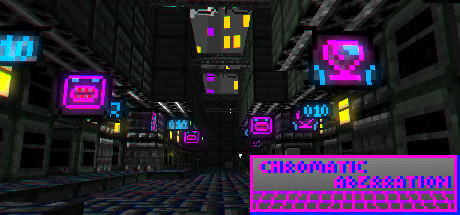Whether you’re a video game enthusiast or a developer looking to enhance your game’s visual effects, understanding chromatic aberration is essential. In this blog, we will delve into the history of chromatic aberration in video games, explore the pros and cons of using it as a visual effect, provide tips and tricks on implementing it effectively, and discuss the future innovations and trends in this fascinating field. So, let’s dive in and discover the world of chromatic aberration in video games!
Understanding Chromatic Aberration: What it is and How it Works
Chromatic aberration is a visual effect that can often be seen in video games, and it’s important for video game enthusiasts and developers to understand what it is and how it works.
Chromatic aberration occurs when different colors of light do not converge at the same point after passing through a lens. It is caused by the dispersion of light, where different wavelengths of light refract differently. This can result in color fringing or blurring in images, giving them a distorted or feathered look.

There are two types of chromatic aberration: axial and lateral. Axial chromatic aberration occurs when different colors focus at different distances from the lens, causing a loss of sharpness. Lateral chromatic aberration, on the other hand, occurs when different colors are displaced laterally, resulting in color fringing at the edges of objects.
Understanding chromatic aberration is important for video game enthusiasts and developers because it can affect the overall quality and clarity of their games. By being aware of chromatic aberration, developers can make informed decisions when selecting lenses and adjusting camera settings to minimize its impact or even utilize it creatively for artistic purposes.
There are various methods to minimize or correct chromatic aberration, such as using apochromatic lenses or employing post-processing techniques. Video game developers can also utilize screen space techniques that simulate lens distortion to create a cinematic or lo-fi analog feel in their games.
The History of Chromatic Aberration in Video Games
The concept of the uncanny valley has had a significant impact on the development of visuals in video games. Traditionally, it was believed that if something looked better, it would be more believable. However, the reality is that our psyche starts judging visuals harshly when they become too close to realistic.
Just before reaching photorealism, there is a dip in believability known as the uncanny valley. This is where our brains start searching for realism and finding all the defects. In order to avoid this dip, video game developers have turned to documentary-style elements to make their games more relatable.

One of these elements is chromatic aberration, which is the distortion of colors that occurs when light passes through a lens and refracts at different wavelengths. In video games, chromatic aberration is used as a visual effect to create a more realistic and immersive experience. It adds a feathered look to the edges of objects and can simulate the imperfections of camera lenses.
Other elements added to visuals include film grain, hand-held effects, lens flares, and focus slips. These elements, which filmmakers would typically try to avoid, help spike our brains and calibrate them toward a sense of realism. They create a more shallow uncanny valley, allowing players to relate to the footage without pushing back against it.

The use of these elements in video games has proven to be effective in enhancing the absorption of the game. By creating a cinematic, lo-fi analog feel, players are able to better immerse themselves in the game world. The addition of chromatic aberration and other documentary-style effects has become a popular technique in game development, emphasizing the importance of visuals in creating a captivating gaming experience.
Pros and Cons of Using Chromatic Aberration as a Visual Effect
Chromatic aberration is a visual effect that has gained popularity in recent years for its ability to add a unique and distorted look to images or videos. This effect is achieved by simulating the way a lens refracts light of different wavelengths, resulting in a feathered look around edges and colors.
One of the pros of using chromatic aberration as a visual effect is its ability to add a vintage or retro aesthetic to content. By applying this effect, creators can create a sense of nostalgia and give their visuals a lo-fi analog feel. Additionally, chromatic aberration can enhance the overall mood or atmosphere of a scene, making it particularly useful for creating a cinematic experience in video games.
Another advantage of using chromatic aberration is its ability to emphasize certain elements or colors within an image or video. By selectively applying the effect, creators can draw attention to specific details and create a focal point for the audience.

Related Posts
However, there are also some cons to consider when using chromatic aberration. One potential drawback is the risk of overusing the effect. When applied excessively, chromatic aberration can make the content difficult to view or understand, and may distract or confuse the audience. It is important to use this effect in moderation and with intention, ensuring that it enhances the overall visual storytelling rather than detracting from it.
Furthermore, the use of chromatic aberration may not be suitable for all types of content or genres. While it can work well in certain contexts, such as horror or sci-fi games, it may not be appropriate for other genres or more realistic visual styles. It is important to consider the context and desired aesthetic before applying the effect.

Overall, chromatic aberration can be a powerful visual tool when used effectively and purposefully. It can add a unique and visually appealing element to images or videos, enhancing the overall experience for the audience. However, it should be used with caution and consideration for the intended audience and message of the content. It is also important to provide an accessibility option for those who may experience discomfort or headaches due to the effect.
How to Implement Chromatic Aberration in Video Games: Tips and Tricks
Chromatic aberration is a visual effect commonly seen in video games that adds a slightly blurred, color-distorted look to certain scenes. This effect mimics the distortions that occur when light passes through a camera lens, adding a touch of realism to the game visuals.

The primary purpose of chromatic aberration in games is to create a more cinematic and realistic feel for players. By introducing color fringing on the edges of objects, games can simulate the visual experience of movies or photographs taken with a real camera. This not only adds depth to the graphics but also enhances the overall immersive experience for players.
It’s important to note that chromatic aberration is a deliberate artistic choice made by game developers. It is not a naturally occurring phenomenon in video games. This effect allows developers to add their unique signature to the visual storytelling of the game, creating a distinct and memorable visual style.
However, there is some controversy surrounding chromatic aberration in games. While some players appreciate the added authenticity and depth that it brings to the game’s visuals, others find it distracting or disorienting. This divide in opinion has led some developers to include chromatic aberration as an accessibility option, allowing players to toggle it on or off based on their personal preferences.
The Future of Chromatic Aberration in Video Games: Innovations and Trends
Despite the prevalence of post-processing effects in video games, there are some that are met with less enthusiasm than others. One such effect is chromatic aberration. The author of the previous section expresses their confusion and dislike for this particular effect, questioning its purpose and why it continues to be used in games.
Chromatic aberration is a visual effect that occurs when light hitting a lens refracts differently based on its wavelength. This results in colors, particularly blues and reds, appearing slightly off and sometimes creating a purple edge. The end result is an image that resembles old-school stereoscopic images.
The author finds chromatic aberration to be an unnecessary and unappealing effect in games. Unlike film grain, which can sometimes serve the purpose of covering up imperfections, the author struggles to see the value of chromatic aberration. It neither enhances the visual experience nor adds any meaningful depth to the game.
As gaming technology continues to advance, with more impressive monitors and increased color depth, the need for post-processing effects like chromatic aberration becomes less relevant. Players are seeking more realistic and immersive experiences, and effects that detract from the visual quality may no longer be welcomed.
To Wrap Up
Chromatic aberration has come a long way in the world of video games, evolving from a technical limitation to a popular visual effect. Throughout this guide, we have explored the history, pros and cons, implementation techniques, and future trends of chromatic aberration in video games. As video game enthusiasts and developers, understanding and utilizing this effect can greatly enhance the immersive experience for players. Whether it’s adding a touch of realism or creating a unique artistic style, chromatic aberration continues to be a powerful tool in the world of video game visuals. So, go forth and experiment with this fascinating effect, and let your creativity shine through!
Sources:
- Chromatic Aberration: What Is It and How Do You Fix It? – Adorama
- One reason why some developers use chromatic aberration. Spoilers: Yes, they know it looks “bad”. | ResetEra

















